Anemone (anemone): an overview of varieties, planting and care
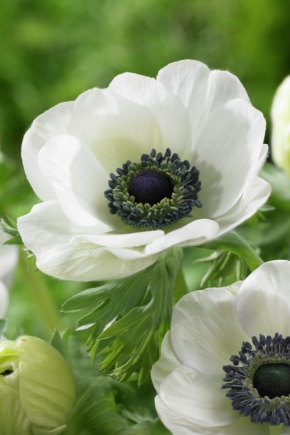
When it comes to decorative flowers, they often recall the rose, chrysanthemum, aster, and tulip. But the anemone can be no worse than the recognized leaders of floriculture. You just need to know well what are the features of this flower and what to look for when cultivating it.

Description
Anemone is not just one species, but a whole genus of perennial herbaceous plants. Crops are included in the buttercup family, and there are about 170 varieties in the group of interest. It should be borne in mind that some biologists consider some of the types of anemones to be related to the genus of lumbago. The plant is found in the northern hemisphere, its range even covers the arctic regions. But in tropical areas it is impossible to meet an anemone.
The Latin name of the genus comes from the ancient Greek word "wind". Some philologists believe that, given the nuances of meaning, an accurate translation will sound like "daughter of the winds" or something like that. In Russian, anemone is called anemone or chickenpox. Susceptibility to the wind is very high: even with weak gusts, the petals can flutter, and the flowers themselves will sway on oblong peduncles. In the past, it was even believed that the buds of anemones are able to open and close depending on the action of the wind.


Now this opinion has been refuted. A characteristic feature of the plant is the fleshiness of the rhizome, which has the shape of a cylinder or a tuber. Terminal stems and peduncles usually appear. Only occasionally do they form in the leaf axils. Occasionally there are plants that do not have root leaves.
In most cases, the leaf is of the finger-dissected or split type. Along with single flowers, semi-umbellate inflorescences are sometimes found.
There are both small and large flowers. The shape of the perianths is very different. There are always a lot of stamens and pistils; leaf covers are practically reduced.

The fruits of anemones are similar to a nut, among them there are naked or covered with fluff. Fruits are often found with structures that facilitate wind movement. In the CIS, about 50 species of anemone are known. Perennial anemones inhabit:
- deciduous forests;
- thickets of bushes;
- shaded lawns;
- wet valleys and grassy slopes in the mountains;
- meadows in degree;
- tundra.
In landscape design, anemone is often used to frame water bodies. The culture is resistant even to a fairly severe frost. Most often, flowering occurs during the spring months. The color of the inflorescences can vary greatly, which gives the plant its charm. Anemone roots grow strictly vertically, they are distinguished by significant mechanical strength.


Types and varieties, their shades
First of all, the crown anemone deserves attention. The development of this plant is very fast. Leaf release begins as early as possible. Leaves of a complex structure are placed on petioles and folded into rosettes. In the crown species, medium-sized seeds appear, covered with short fluffs.


The Udskaya variety is widespread in nature in the Primorsky Territory of the Russian Federation. Flowering occurs in May and partly in June. The Hubei (Hubei) anemone also has attractive features. The plant blooms in autumn, its habitat is east Asia, including Japan.Strong stems up to 1.5 m long are formed.


A characteristic feature of the Khubei plant is creeping rhizomes. The petals surrounding the inflorescence are hidden from external view by sepals. This delicate variety comes from the Caucasus region. In nature, it also inhabits the Balkan and Asia Minor regions. Delicate anemones reach 0.15 m in height, their rhizome resembles a thickened tuber.


Flexible view - relatively low (up to 0.2-0.3 m maximum) culture. It should be borne in mind that the growth of peduncles occurs during the entire flowering... The appearance of thin (up to 1.5 mm) adventitious roots is characteristic. Flexible anemone can be found in the forest along with willow, alder.

The Virginia variety is characterized by increased moisture-loving capacity and is able to survive even with significant moisture. The plant can grow on almost any land. It can be propagated both by seeds and by dividing the bushes. The Canadian anemone reaches 0.2-0.8 m in height.It will be able to develop on the ground with a weak alkaline or neutral chemical reaction
... Flowering continues in June and July. There are plants with white and green colors.

The autumn group also includes the felt anemone. The period of flower formation begins in late summer or in the first days of autumn. Natural specimens grow up to 1.2 m. This species is valued for its resistance to cold and other unfavorable conditions. The lower edge of the leaves is always pubescent.


The Udinian anemone inhabits forests, where it can be found both on the edges and in the glades. Optimum soil will be neutral, slightly acidic. Planting on loams and soils with a different light structure is recommended. Under normal climatic conditions, no special shelter is required for the winter.

Daffodil anemone has another name - "bunch", the height of such plants is limited to 0.4 m. The stem is completely pubescent. The flowers are yellow with white or lemon color. The stamens are usually yellow. Flowers are single or collected in groups of 3 to 8 pieces. Flowering time comes in the first half of June. The main application of the culture is lawns decorated with stone borders. The daffodil plant originates from the American states of Wyoming and Colorado.


Blue anemone - the plant is not too tall (up to 0.25 m). Bushes are covered with relatively small flowers. It will grow quickly, but optimal shading is critical.


It is worth taking a closer look at the Ural anemone. This is a herbaceous culture with a height of 0.1-0.25 m. Its stem grows straight. The length of the petioles ranges from 0.4 to 1 cm, the leaves have a triple structure and narrow-lanceolate lobes.
Flowers can be colored in:
- pink;
- cream;
- light yellow;
- sometimes blue.
The flowering period is in April and late spring. When fruiting is over, the plant dies off. Both vegetative and seed propagation is possible. In nature, the habitat is meadow and river thickets, with a predominance of bird cherry and alder. The species got its name because it is endemic to the south and middle of the Urals. Unfortunately, it is listed in the global Red Book.

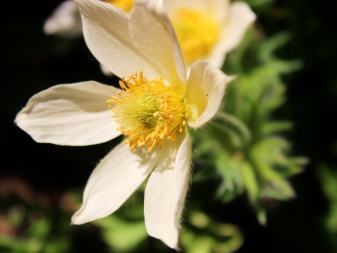
As for the hybrid bush anemones, these are varieties such as:
- Welwind;
- "Margaret";
- Queen Charlotte;
- "Serenade".
Later flowering made the culture the best option for a summer cottage. When this bloom occurs, several arrows are released at once. The leaves are characterized by a juicy green color. The middle of the flowers is yellow, and their perimeter is of the semi-double type. Bland's anemone is often an attractive choice.
This type of anemone grows naturally in the mountains, which predetermined its resistance to desiccation and the need for significant lighting.



In gardening, this species is used mainly as a ground cover plant.The bushes will grow quickly and create a chic carpet that will be admired by all people, even with minimal aesthetic taste. In nature, Blanda inhabits:
- Balkans;
- Asia Minor;
- Caucasian ridge.

For normal cultivation at home, you will definitely need lime soil. The bushes look as gentle and airy as possible. The appearance of chamomile-like inflorescences occurs in the last part of spring. The diameter of the inflorescence can reach 0.07 m. Blanda's blue color predominates, but there are options with:
- rich blue;
- pink;
- white colors.


The Japanese species Pamina grows up to 0.7 m in height. Its flowers are semi-double and have a dark pink color. A prerequisite for horticultural success is the use of fertile land.
The plant as a whole is unpretentious, but timely mulching of the earth is a valuable help for it.


The forked variety of anemone has white and green colors. Among this plant, varieties and varieties with red flowers are extremely rare. Specifically for the fork type, irrigation of the land is required 2 or 3 times a week. The culture will bloom in June and July. The optimal soil is loose clays with a neutral or slightly alkaline type of acid-base balance. The recommended temperature is 18 to 25 degrees Celsius.


The main dispersal of forked plants in their natural environment occurs:
- in the Russian Far East;
- on the territory of Mongolia;
- in the PRC;
- on the island of Hokkaido;
- in certain areas of the Korean Peninsula.
In all these regions, the species can be seen in the forest, on the seashore, and in various meadow areas. The length of the leaf reaches 0.1-0.15 m. From the inside, the leaves are covered with medium-sized hairs. In the autumn months, these leaves take on a rich red color. The decorative characteristics of the leaf are maintained until the arrival of the first frost.

Altai anemone also occupies a well-deserved place among perennial horticultural crops. It is classified as one of the primroses, and in terms of the speed of awakening, the plant is even ahead of the famous coltsfoot. On a creeping rhizome, a strictly straight stalk develops, no longer than 0.25 m and with a simple type of structure. The flowering period covers April and the first ten days of May. There are 3 leaves on the stem, and from 8 to 12 petals in the flowers.
The violet color is characteristic of the forest anemones. True, it appears only occasionally, and only at the base of the flowers. The main part of the plant is always white. Landing on sandy loam in partial shade is recommended. The forest anemone is often used as a ground cover crop. For reproduction, rhizomes are divided or seeds are used.



Preparing to disembark
Consider the main points related to planting anemone.
Planting material
You can often find a mention that planting an anemone is possible even in February. However, such an early use of tubers means the need to illuminate the seedlings using phytolamps or LED light sources. At the end of winter, there is not enough light even on the southern windows. For planting, it is advisable to choose larger tubers. However, if they are not too large, it is likely that the plants will bloom only in the second year.
The preparatory process always involves soaking in water. Do this:
- put a napkin or a large rag in the container;
- spill it with a fungicide or a growth accelerator;
- nodules are laid out on top;
- cover them with completely dry napkins (rags, cotton pads);
- cover the container with polyethylene;
- maintain the planting material until it swells (usually it takes 30-180 minutes);
- washed tubers in water (if "Epin" was used for processing).
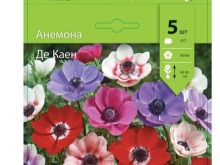


The soil
It is possible to grow an anemone outdoors without any problems. But she does not tolerate transplantation, therefore, the culture must be planted in separate containers. The optimal mixture is fertile and loose.Usually they take the same amount of peat and sand. You can simplify your life by using a ready-made store-bought mixture for flowers.
The soil in the garden (flower bed) should be:
- with fertile substances;
- with good drainage;
- with a fairly loose structure.


How to plant?
Planting anemone in a flower bed can be done in the autumn and spring months. If you choose to plant just before winter, then you can achieve the earliest flowering. But the procedure deserves careful attention and its features must be strictly observed. Proper care and snow retention must be ensured. Only under a dense layer of snow can anemones overwinter without problems.
Thorough cover is also required. And even with this approach, it should be understood that the risk of failure in most of the territory of Russia is great. The most rational temperature during rooting ranges from 9 to 12 degrees Celsius. In the subtropical zone, the necessary conditions are created by the beginning of November. And here in temperate areas, it is best to try to complete the work by mid-October.
Small (up to 1 cm) tubers are planted according to the scheme 0.1x0.2 m.If the size of the planting material is 1-1.5 cm, the scheme 0.15x0.2 m is used.The largest tubers are planted according to the system 0.2x0.2 m Deep deepening of the planting material is not recommended. Usually it is only sprinkled a little and actively watered, complete covering with earth is needed after the formation of shoots.


The seeds are planted like this:
- waiting for swelling;
- transferred to containers with a wet mixture (which includes sifted soil, humus and coarse sand);
- keep at a temperature of +5 until the sprouts look out;
- drip in the garden until the end of winter (under a layer of sawdust or compost);
- when the warm season comes, the container is removed.

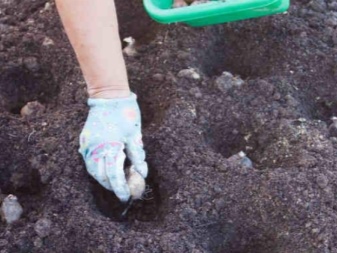
When choosing a suitable final disembarkation site, ensure that:
- water will not stagnate;
- the site will be spacious enough;
- the territory will be partially shaded and covered from drafts;
- the illumination corresponds to the variety (forest varieties need deep shading).


How to take care of it properly?
Caring for an anemone when grown in the suburbs is not too difficult. It will only be necessary to systematically moisten the temporary soil until the time comes for transplanting into open ground. Then the seedlings are protected:
- straw;
- sawdust of deciduous trees;
- dried leaves;
- coniferous paws.


Top dressing
In the autumn months, the land around the anemones is saturated with organic mixtures. Important: all varieties of this plant react extremely negatively to the introduction of manure. If compost is used, then only from the leaves of fruit crops. To improve the result, mineral compositions are used, including magnesium and potassium. No additional measures are required for the normal development of flowers and stems.


Watering
Anemone should be watered in the fall only as needed. And this "need" comes a maximum of 1 time in 7-8 days. If there is too much water, the plant may die. This approach should be practiced both in relation to seedlings and in relation to adult specimens. Other requirements are as follows:
- in spring it is necessary to irrigate anemones weekly;
- in the summer, this is done twice or thrice a week;
- in the heat, the plant is watered at the root in the morning and evening hours;
- stagnation of water should not be allowed.
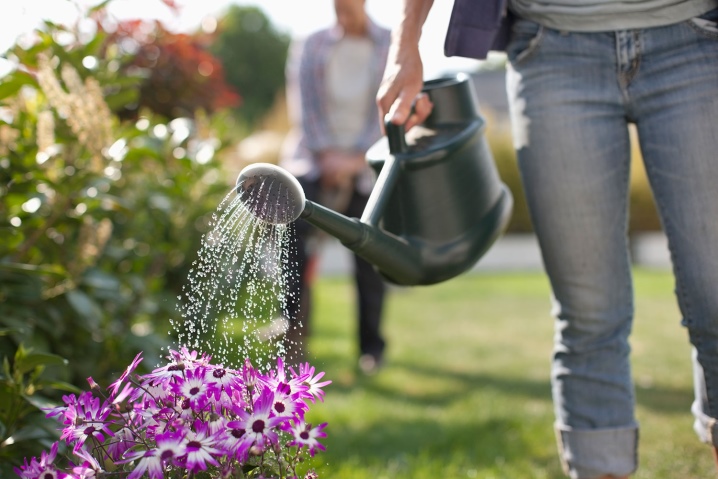
Wintering
It is necessary to specially dig the anemone and transfer it to the house only if very severe frosts await. Under normal conditions, horticultural measures to protect against freezing of the soil are sufficient. The necessary protection will be provided by:
- thick layouts of dry herbs;
- unnecessary branches;
- spunbond;
- agrospan;
- spantex.
It is necessary to dig up and transfer into the house those varieties of culture that fade, and after the formation of seeds they die off. For winter storage in the house, you need to choose a place that is not subject to constant dampness. Otherwise, the plant may rot before it reaches spring.But desiccation is also contraindicated - it is better that the humidity is relatively balanced. Exposure to extreme cold is also unacceptable, because storing anemone in the basement is not a good idea.



Mulching
Oak, linden and apple leaves are ideal as mulch. At the same time, they try to reproduce the natural forest floor as much as possible. For mulching, compost, loosened peat or humus are often used. The procedure is repeated before active growth begins. In autumn, mulching is carried out with herbal compost.

Reproduction methods
As already mentioned, anemone can be propagated from seeds and by a vegetative method. The second option is useful for hybrid crops. You can divide roots and bushes both in spring and autumn. Important: it is necessary to divide the bush before the growth of shoots begins. The optimal time is the first days of March.
A split plant is planted most often in the spring. Such a step will guarantee an excellent transfer of winter. But the landing of the divided material in September will be already a risk. Varietal species are propagated mainly by seeds. They are planted immediately after collection, in wooden boxes. But the same can be done in early spring.
Germination of seeds is possible when the air warms up to 25 degrees. If the temperature is higher, you will have to wait longer. It is necessary to dive plants when a pair of full-fledged leaves develops. Seedlings should be planted in light shade. Only next year will it be possible to transplant seedlings into free land, and flowering will begin in the third year.
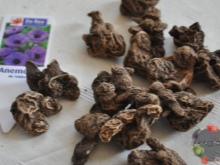


Diseases and pests
Anemone often suffers from nematode infestations. The manifestation of aggression turns out to be yellow (acquiring a darker color over time) spots. If there are a lot of nematodes, the flower may die. Gardeners can only get rid of the affected fragments, and sometimes from the entire plants. At the same time, they also replace all the soil in problem areas.
Slugs also attack foliage. But it is already easier to deal with them - it is enough to collect the pests by hand. Lures also help a lot. Beware of slug infestation is most relevant on damp days.
In bad weather, you will have to constantly inspect the plants. Inspection of purchased seedlings helps protect against South American leaf mineral.


Of the diseases, the threat to anemones is:
- gray rot;
- powdery downy mildew;
- anthracnose;
- viral lesions.



Examples in landscape design
Anemone can be grown even against the background of common herbaceous plants. In such an environment, she also shows her visual charm and allows you to achieve a brilliant effect. Moreover, as shown in the photo, lower flowers occupy the front tier.

And this is how a composition like "meadow" looks like. The combination of bright blues and pleasant white colors captivates at first sight.

This photo shows how beautiful a pair of rows of anemones can look like when planted along a rocky garden path.

And here it is demonstrated how beautiful the landscape design is if you use an anemone against the background of a white fence. A seemingly common combination of blue and white colors was used, but the result is a very elegant solution.

You can also plant an anemone around a birch tree and against the background of vegetable hedges. The height of these hedges can also vary, usually the farthest of them is the tallest.

How to grow an anemone correctly, see the next video.





































































































The comment was sent successfully.